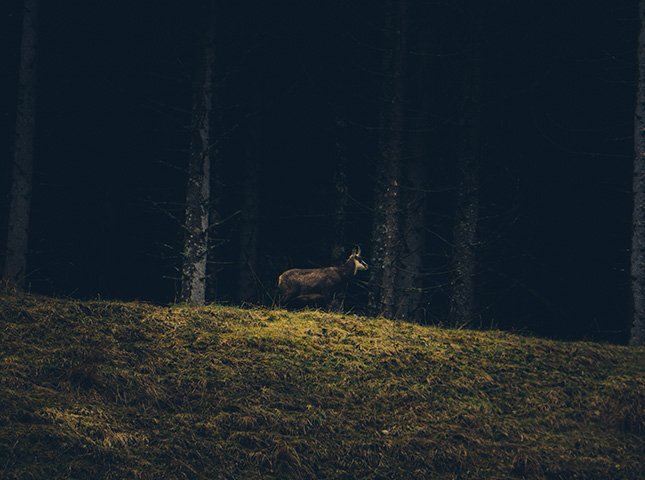Deer, majestic creatures of the wild, have always fascinated humans with their grace and beauty. However, for hunters, wildlife enthusiasts, and even homeowners, understanding the behavior of deer is crucial. One of the most frequently asked questions is, “What time do deer come out in the evening?”
Table of Contents
Key Takeaways
- Deer are crepuscular, meaning they are most active during dawn and dusk.
- Factors like weather, hunting pressure, and food availability can influence deer movement.
- Deer tend to avoid extreme temperatures and prefer cooler parts of the day.
- Understanding deer behavior can enhance hunting success and wildlife observation.
Factors Influencing Deer Movement
Weather Patterns
Deer are sensitive to weather changes. On cooler days, especially after a rain, deer are more likely to be active during the evening hours. Conversely, during hot and humid days, deer prefer to rest and will usually come out later in the evening when temperatures drop.
Hunting Pressure
In areas with high hunting pressure, deer might alter their habits to avoid hunters. This means they might come out later in the evening, well after sunset, to ensure their safety.
Food Availability
The availability of food plays a significant role in determining when deer come out. In seasons where food is abundant, deer might come out earlier to graze. However, in times of scarcity, they might delay their activities to conserve energy.
Deer Behavior Throughout the Year
Spring and Summer
During these seasons, food is abundant, and deer are less cautious. They tend to come out earlier in the evening, especially if the weather is favorable.
Fall
As the rutting season approaches, male deer (bucks) become more active in search of mates. This increased activity means they are more likely to be seen during the evening hours.
Winter
Food becomes scarce, and deer need to conserve energy. They might come out later in the evening, depending on food availability and weather conditions.
Observing Deer in the Evening
For those interested in observing deer, the evening is a prime time. Equip yourself with binoculars and find a quiet spot to watch. Remember, deer have an acute sense of hearing, so it’s essential to remain silent.
Best Times to Observe Deer Based on Season
| Season | Time to Observe |
|---|---|
| Spring | Early Evening |
| Summer | Early Evening |
| Fall | Mid to Late Evening |
| Winter | Late Evening |
Safety Precautions
While observing or hunting deer in the evening, it’s essential to be aware of your surroundings. Carry a flashlight, wear reflective clothing, and always inform someone of your whereabouts.
Deer and Human Interactions
As urban areas expand, interactions between deer and humans have become more frequent. Understanding when deer are most active can help in reducing road accidents and other unwanted encounters.
Deer Behavior and Human Activities
Understanding deer behavior is not just for hunters or wildlife enthusiasts. As human settlements expand into deer habitats, the chances of encounters increase. From road accidents involving deer to deer venturing into gardens and yards, understanding their behavior can help in coexisting peacefully.
Deer in Urban Areas
With the loss of their natural habitat, deer are often found venturing into urban areas. They can be seen grazing in gardens, parks, and even on roadsides. While they might seem harmless, it’s essential to remember that they are wild animals and can be unpredictable.
Reducing Deer-Human Conflicts
Several measures can be taken to reduce conflicts:
- Fencing: Installing deer-proof fences around gardens can prevent them from grazing on plants.
- Deer-Resistant Plants: Planting deer-resistant plants can deter them from entering gardens.
- Safe Driving: Especially during dawn and dusk, drivers should be cautious in areas known for deer activity.
By understanding and respecting the behavior of deer, we can ensure a harmonious coexistence with these magnificent creatures of the wild.
Frequently Asked Questions
1. Why are deer more active during dawn and dusk?
Deer are crepuscular animals, which means they are most active during the twilight hours of dawn and dusk. This behavior helps them avoid predators that are active during the day and night. Additionally, the cooler temperatures during these times are more comfortable for deer, especially during hot summer days.
2. How does the moon phase affect deer movement?
The moon phase can influence deer movement, especially during the rutting season. Some studies suggest that deer are more active during the full moon. However, other factors like weather and hunting pressure can also play a significant role in deer activity.
3. Are deer more active in certain seasons?
Yes, deer activity varies with seasons. During spring and summer, they are more active due to the abundance of food. In fall, the rutting season sees increased activity, especially among bucks. In winter, deer tend to conserve energy and might be less active, especially during extreme cold.
4. How can I safely observe deer in the wild?
When observing deer, it’s essential to maintain a safe distance and avoid startling them. Use binoculars or a telescope for a closer view. Ensure you are downwind so that deer don’t pick up your scent. Also, avoid making sudden movements or loud noises.
5. Can deer see flashlight or torchlight?
Deer have a different vision spectrum compared to humans. While they might not see the beam of a flashlight as brightly as we do, sudden light can startle them. It’s always best to use red or green lights when observing deer as these colors are less visible to them.


